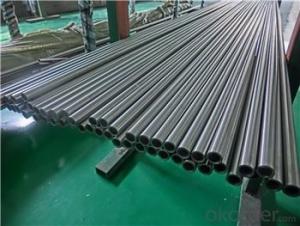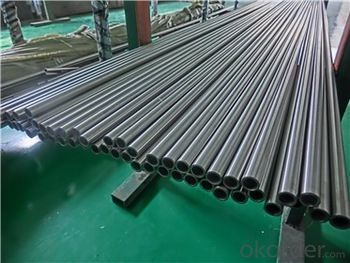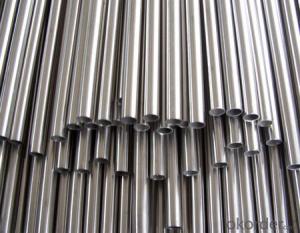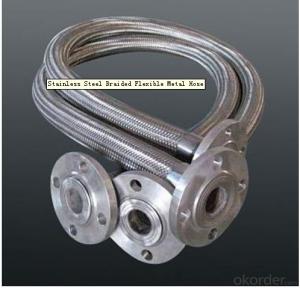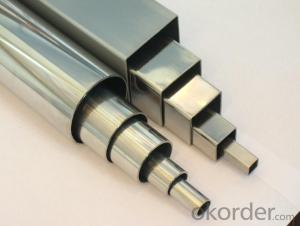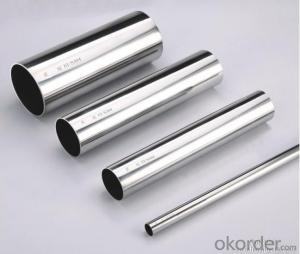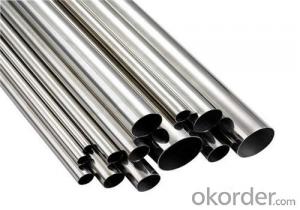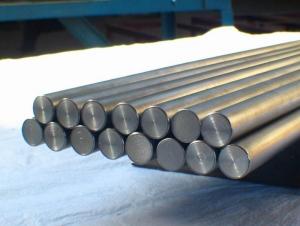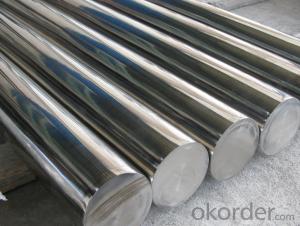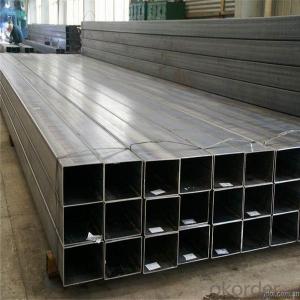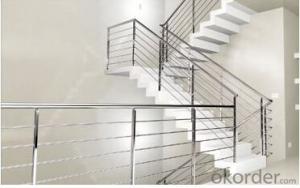304 /316/321stainless steel seamless pipe
- Loading Port:
- Qingdao
- Payment Terms:
- TT OR LC
- Min Order Qty:
- 100 kg
- Supply Capability:
- 1000000 kg/month
OKorder Service Pledge
OKorder Financial Service
You Might Also Like
Specification
Stainless steel pipe is a hollow long round steel, widely used in petroleum, chemical, medical, food, light industry, machinery, instrument, such as industrial pipeline and mechanical structure parts, etc. In addition, in the bending and torsional strength phase, the weight is lighter, it is widely used in the manufacture of machinery parts and engineering structures. Also commonly used for the production of various kinds of conventional weapons, barrel, shells, etc. We also supply stainless steel parts, such as the three links, elbow, flange etc. Looking forward to establishing a long-term business relationship with you.
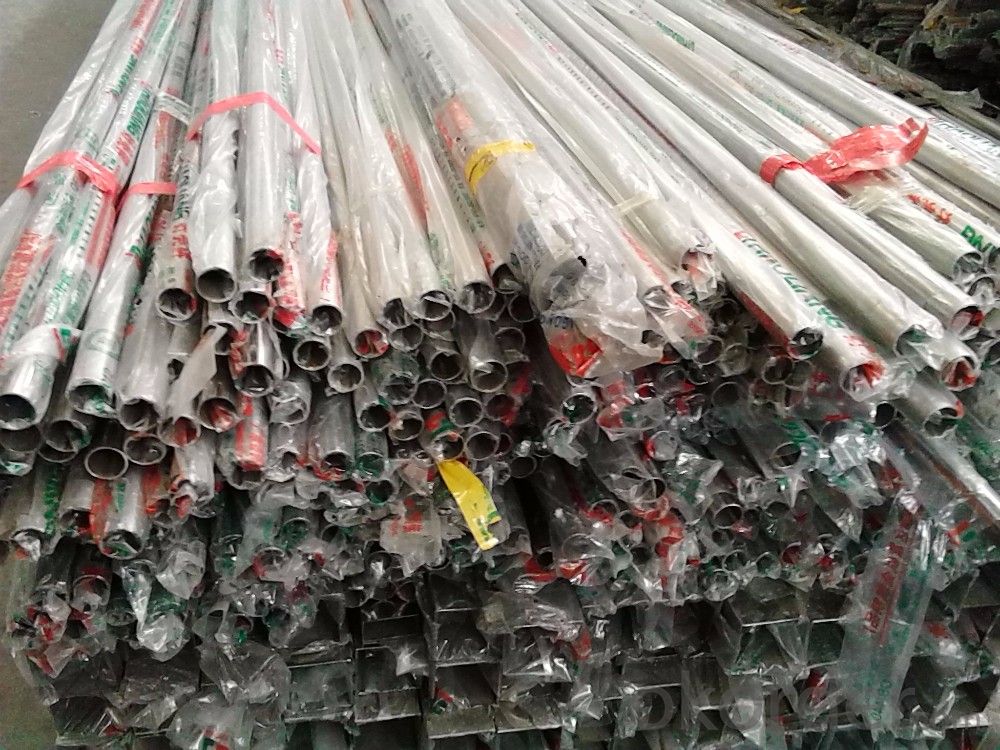
Item
| Description |
| Product name | Stainless steel pipe/tube |
| Material | 201 202 304 304L 316 316L 321 309 310 310S 430 410 |
| Thickness | 0.5mm-100mm |
| Outer diameter | 10mm-1000mm |
| Length | 6meters or as per customized |
| Technical treatment | Cold rolled and Hot rolled |
| Application | decorative pipe, construction pipe, mechanical pipe, stove heat exchanger tubes, food hygiene pipe, water and liquid delivery |
| Standard | ASTM GB KS AISI SAE AWS ASME BS DIN CAS API KR NK LR AB JIS |
| Certification | BV ISO SGS API WSF |
| Dimension(L*W*H) | 0.5mm*6mm*6000mm-8mm*610mm*6000mm |
| Trade terms | Pay terms: L/C T/T west union |
| Price terms: FOB CIF EXW CFR |
| Test | Squash test, extended test, water pressure test, crystal rot test, heat treatment, NDT | |||||
| Chemical Composition | 201 | 202 | 304 | 316 | 430 | |
| C | ≤0.15 | ≤0.15 | ≤0.08 | ≤0.08 | ≤0.12 | |
| Si | ≤1.00 | ≤1.00 | ≤1.00 | ≤1.00 | ≤1.00 | |
| Mn | 5.5-7.5 | 7.5-10 | ≤2.00 | ≤2.00 | ≤1.00 | |
| P | ≤0.06 | ≤0.06 | ≤0.045 | ≤0.045 | ≤0.040 | |
| S | ≤0.03 | ≤0.03 | ≤0.030 | ≤0.030 | ≤0.030 | |
| Cr | 16-18 | 17-19 | 18-20 | 16-18 | 16-18 | |
| Ni | 3.5-5.5 | 4.0-6.0 | 8.0-10.5 | 10.0-14.0 | ||
| Mo | 2.0-3.0 | |||||
| Mechanical Property | Material Item | 201 | 202 | 304 | 316 | |
| Tensile Strength | ≥535 | ≥520 | ≥520 | ≥520 | ||
| Yield Strength | ≥245 | ≥205 | ≥205 | ≥205 | ||
| Extension | ≥30% | ≥30% | ≥35% | ≥35% | ||
| Hardness (HV) | < 253 | < 253 | < 200 | < 200 | ||
- Q: What are the disadvantages of using stainless steel pipes?
- Some potential disadvantages of using stainless steel pipes include their higher cost compared to other materials, their susceptibility to corrosion under certain conditions, and the difficulty of welding and shaping them. Additionally, stainless steel pipes may be prone to scratching or denting, and they can be less resistant to certain chemicals or extreme temperatures compared to other materials.
- Q: What is the difference between the stainless steel tube and tube rolling
- We usually say the hot-rolled seamless slide into thermal expansion, is to use tools of the pipe up, supporting circle. Cold is the opposite, a fixed mould outside the inner hole of the fixed mandrel, from the outside to make him thinner. Annealing is required before hot rolling, without cold rolling. In hot rolling billet after annealing, stainless steel seamless pipe, wall production minus a broaching machine after reaming compression capability, good flexibility, technological properties were superior to those of ordinary tube ligation.Now the Zhejiang area in the production of stainless steel seamless pipe is widely used cold production technology, but higher production efficiency of 2 roller cold rolling mill, a lot of strength of the manufacturers are equipped with, because the price of the purchase quantity not more general factory. It is commonly used in conjunction with cold drawn units to increase efficiency and reduce production costs.It is precisely because of their differences in production and processing technology, but also makes the hot-rolled stainless steel and cold-rolled pipe has the following differences:A: seamless pipe and tube rolling produced products, though they are working with the tube, but the application is different, generally used for mechanical drawing, heat exchanger pipe, pipe and tube rolling engineering, generally used for fluid transport in pipeline construction;Two: seamless pipe and tube rolling process and product quality; slide processing, low defect, high precision, uniform grain size;Three: two different prices, the price to slide rolling ratio is more expensive;Four: the stainless steel tube ligation can only in diameter 38-159 pipe, or other drawing process. Because of the production process, the tube size is relatively accurate. In the purchase of steel tubes, or tube rolling is drawing, but also the actual situation needs to choose.
- Q: Are stainless steel pipes suitable for offshore platforms?
- Offshore platforms can indeed utilize stainless steel pipes effectively. Stainless steel is a material that resists corrosion and can endure the harsh marine environment, including exposure to seawater, salt, and other corrosive substances. It is capable of withstanding oxidation and pitting, which are common problems in offshore settings. The use of stainless steel pipes in offshore platforms is widespread, serving various purposes such as fluid and gas transportation, structural support, and protection. These pipes are renowned for their exceptional strength, durability, and reliability, which are pivotal in offshore operations that prioritize safety. Moreover, stainless steel pipes necessitate minimal maintenance, reducing the need for frequent inspections and repairs. This advantage is particularly beneficial in offshore environments where accessibility and upkeep can be challenging due to remote locations and severe weather conditions. Aside from its corrosion resistance, stainless steel also possesses desirable traits such as heat resistance, fire resistance, and excellent mechanical properties. These characteristics make stainless steel pipes an optimal choice for offshore platforms, as they can withstand high temperatures, fire hazards, and mechanical stress. Overall, stainless steel pipes offer a cost-effective and long-lasting solution for offshore platforms, ensuring the safety, reliability, and efficiency of operations in these demanding environments.
- Q: Are stainless steel pipes more expensive than other types of pipes?
- Yes, stainless steel pipes tend to be more expensive than other types of pipes due to their durability, corrosion resistance, and high-quality material.
- Q: What is the difference between seamless and spiral welded stainless steel pipes?
- The main difference between seamless and spiral welded stainless steel pipes lies in their manufacturing process. Seamless pipes are formed by piercing a solid billet of stainless steel and then rolling it into a pipe shape, resulting in a continuous and uniform structure. On the other hand, spiral welded pipes are made by rolling a coil of stainless steel into a spiral shape and welding the edges together. This creates a noticeable weld seam along the length of the pipe. While seamless pipes are generally considered to have superior strength and aesthetic appeal due to their uninterrupted structure, spiral welded pipes are often more cost-effective and suitable for applications requiring larger diameters.
- Q: What is the difference between stainless steel tube 304L and 304N?
- The lower carbon content minimizes the precipitation of carbides in the heat affected zone near the weld, while the precipitation of the carbides may lead to intergranular corrosion in stainless steels in certain environments.
- Q: Stainless steel pipes can not be less than the amount of chromium
- The chromium content of stainless steel is generally not less than said first why stainless steel tube is not easy to rust 12%-304 stainless steel tube, then why stainless steel will rust stainless steel is not easy to have a great relationship with the composition of stainless steel rust. In addition to iron, stainless steel contains chromium, nickel, aluminum, silicon and so on.
- Q: Can stainless steel pipes be used in the mining industry?
- Indeed, the mining industry can make use of stainless steel pipes. Stainless steel, as a material, is highly durable and resistant to corrosion, which makes it perfect for the harsh and demanding conditions often encountered in mining operations. The mining industry involves the extraction and processing of various minerals and ores, which frequently necessitate the use of corrosive chemicals and high-pressure fluids. Stainless steel pipes possess the ability to withstand these challenging conditions and provide reliable and long-lasting performance. One of the primary advantages of stainless steel pipes in the mining industry lies in their corrosion resistance. The mining environment typically contains corrosive substances like saltwater, acids, and various chemicals employed in mineral extraction and processing. Stainless steel pipes can resist these corrosive elements, ensuring that they do not deteriorate or weaken over time. Consequently, they are ideal for transporting fluids and gases in mining operations. Aside from their resistance to corrosion, stainless steel pipes also exhibit exceptional strength and durability. They can endure high pressures and temperatures, making them suitable for handling the demanding conditions of the mining industry. Additionally, stainless steel pipes are known for their low maintenance requirements, which is particularly crucial in remote mining areas where accessibility and maintenance can be challenging. Moreover, stainless steel pipes are versatile and can be utilized in various applications within the mining industry. They can be employed for transporting water, slurry, and other fluids, as well as for ventilation systems, structural components, and even lining mine shafts. Their versatility and durability make them a cost-effective choice for mining companies, as they can be used in a wide range of applications and have a long service life. In summary, stainless steel pipes are a dependable and long-lasting option for the mining industry. Their resistance to corrosion, high strength, and versatility make them well-suited for the demanding conditions encountered in mining operations. By utilizing stainless steel pipes, mining companies can ensure the efficient and safe transportation of fluids and gases, thus contributing to the success and productivity of their operations.
- Q: Can stainless steel pipes be used for pharmaceutical storage?
- Yes, stainless steel pipes can be used for pharmaceutical storage. Stainless steel is a preferred material in pharmaceutical industry due to its corrosion resistance, hygienic properties, and ease of cleaning. It ensures the integrity and purity of pharmaceutical products, making it suitable for storage and transportation of pharmaceutical materials.
- Q: Can stainless steel pipes be used for desalination plants?
- Yes, stainless steel pipes can be used for desalination plants. Stainless steel is highly resistant to corrosion, making it an ideal material for transporting seawater in the desalination process. Additionally, stainless steel pipes offer excellent strength and durability, ensuring long-term reliability in such harsh environments.
Send your message to us
304 /316/321stainless steel seamless pipe
- Loading Port:
- Qingdao
- Payment Terms:
- TT OR LC
- Min Order Qty:
- 100 kg
- Supply Capability:
- 1000000 kg/month
OKorder Service Pledge
OKorder Financial Service
Similar products
Hot products
Hot Searches
Related keywords
